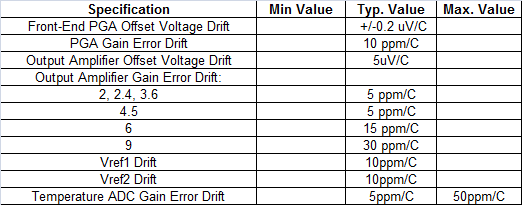Hi
We have some questions for PGA309 from our customer.
The customer are evaluating PGA309 on their board.
Please give us advice for these questions?
1.The conditions required specifications of our customers is Ta = -40degC - 125degC.
(Requirements less than 1% ±) Can this device ensure is to what extent accuracy in all temperature range of use?
( The temperature index is only 17 points. )
2. Can you give us if there is a setting example in Fine and Coarce.
3.How much the response speed does this device have?
( To the output of the results from the detection)
Please let me know if you have any question.
Regards,
Koji


